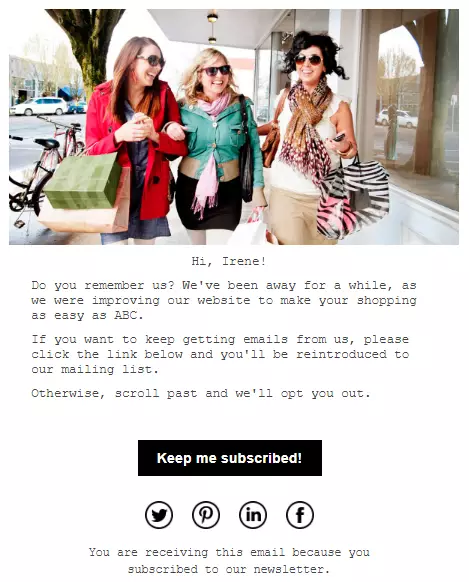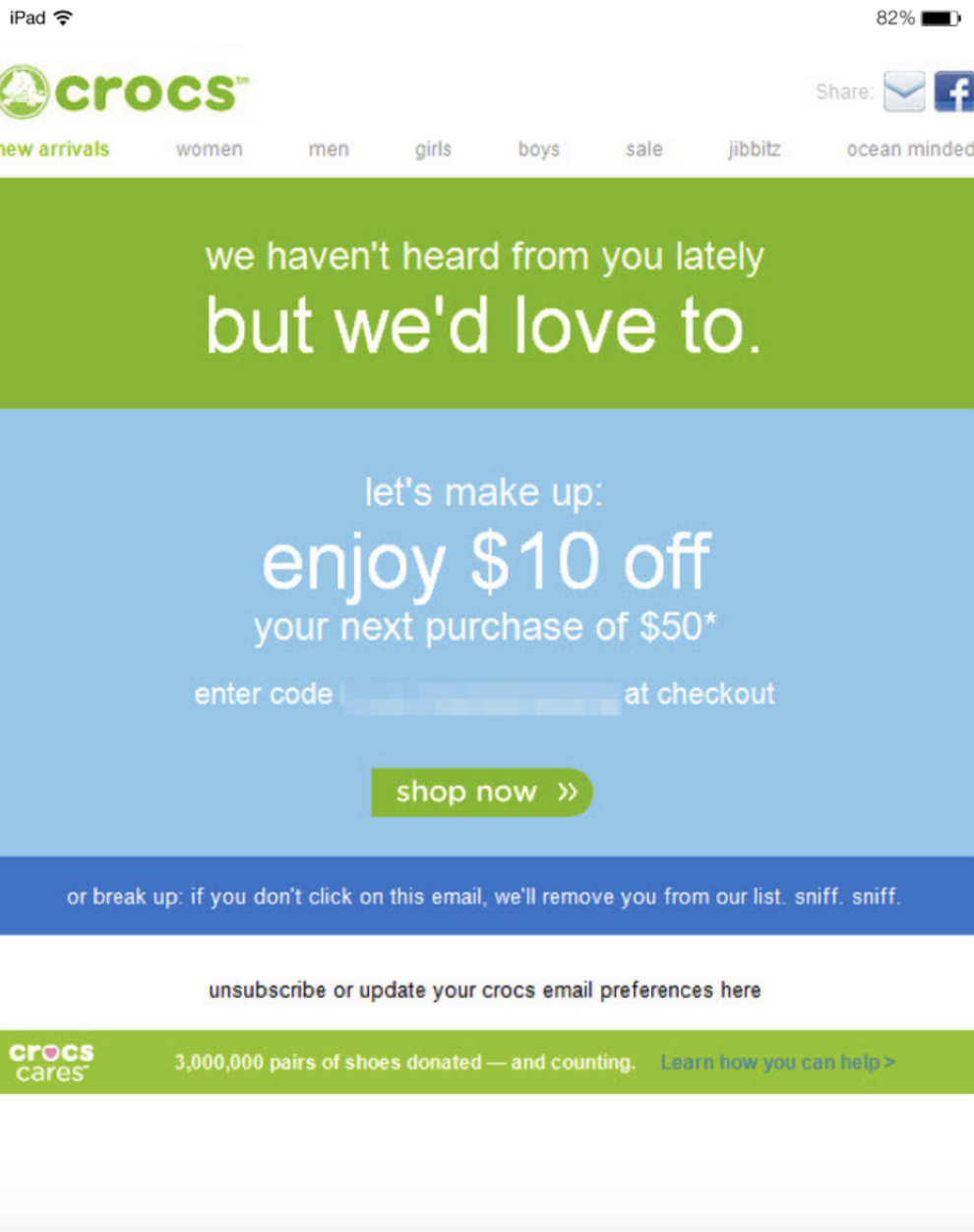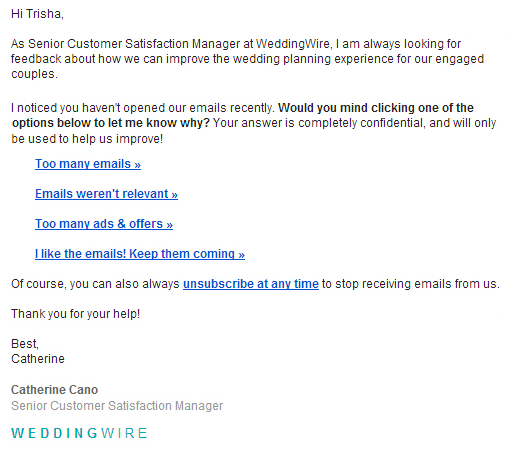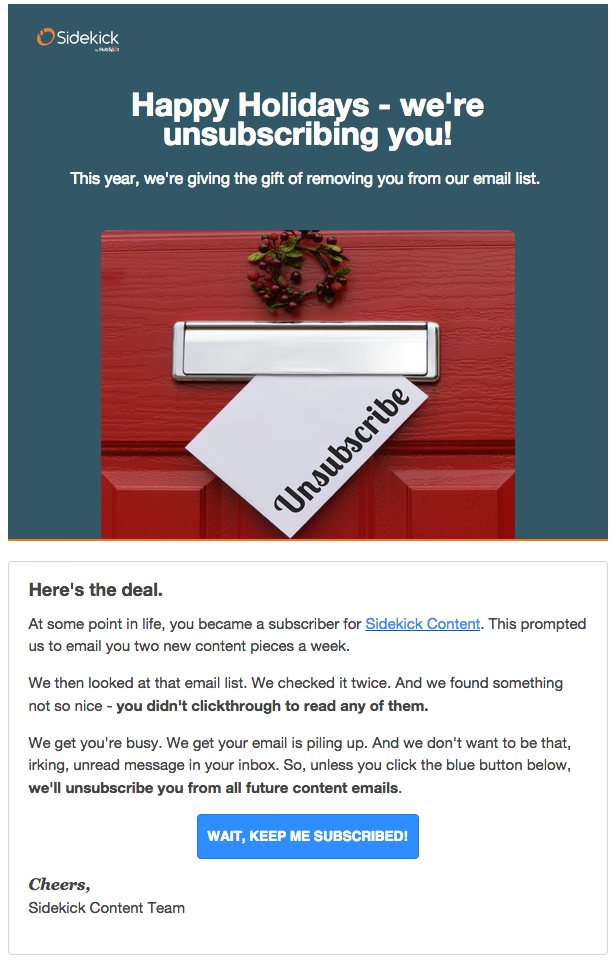As business owners we get it: Sometimes, people lose touch. They forget to open an email and before they know it they’ve completely forgotten that they subscribed to our email list in the first place.
It happens a lot. In fact, according to Marketing Sherpa 75% of an email list on average is inactive. But as business owners we know this isn’t good for long term growth. We need to take the time to win back the relationship so that our inactive subscribers become engaged.
You can win back inactive subscribers by writing a re-engagement email sequence that will re-energize your mailing list. A survey showed that after receiving a re-engagement email, 45% of subscribers will read subsequent emails.
In this article, I will explain how you can create your own high converting re-engagement email sequence.
What Are Re-Engagement Emails?
A re-engagement email is an email that reactivates communications with a subscriber who got lost along the way. For whatever reason – perhaps they couldn’t understand your offer, found an alternative or simply didn’t think the content you sent was relevant – they stopped opening and engaging with your emails.
Or maybe it was you who lost your way and you haven’t sent out an email for way too long because you didn’t have an email strategy.
But as we all know, this doesn’t mean the email game is over. Rather, you just need to use re-engagement emails to meet them where they’re at right now in their customer journey.
A re-engagement email also gives you an insight into who’s still interested in your brand, it reignites the relationship and it can also generate some sales.
Moreover, when you can see who is and who isn’t interested in your brand, you can give your list a bit of pruning, cleaning it up and eliminating any risk you might have of ending up in too many spam folders.
First, though, you need to create your re-engagement email sequence.
Create a Re-Engagement Email Sequence
Email No.1: Reminder
For the first email in your re-engagement email sequence, I recommend sending a reminder email that lets the customer know that you’ve noticed they’ve been gone for a while.
Dean Jackson’s nine-word email is a great way to do this as it’s the easiest way to grab their attention back and nudge them off the fence. The entire purpose of the email is to ask a question that engages and gets a response.
The email should be conversational and focus on your subscriber’s already existing need. It should look like this:
“Hey [subscriber first name],
Are you still looking for a [fill in assumed thing people were looking for when they signed up]?
Thanks,
[Your name]”
Here are some examples in case you need some inspiration:
Are you still looking for antique jewelry?
Are you still looking to implement a social media strategy?
Are you still searching for a solution to your warehousing and logistics needs?
Are you still interested in investing?
It’s simple, it’s friendly and it helps to re-engage your subscribers.
If, on the other hand, you haven’t sent out any emails for a long time, you can begin by reminding your subscribers who you are, before explaining where you’ve been and why you want them onboard as you move forward into exciting new realms.

Email No.2: Coupons or Promo Codes
Coupons and promo codes are a fantastic way to bring lost customers back into the email game.
Send inactive customers a coupon and attach a message along the lines of, “Hey – it’s been a while. Because we don’t want to lose you forever, we thought we’d offer you a special promo code just for you.”

The offer you provide has to be enticing enough to win your subscribers back. A study found that a dollar-off discount consistently performed 2x better than a percentage discount.
The type of offer you provide will likely depend on your business model.
Email No.3: Survey
A really easy way to make sure your future emails hit the spot with your subscribers is by sending out a survey email. This gives you the chance to ask your subscribers directly what they want to see in their inbox – what topics they’re interested in- as well as how often they want to see you.
Sending a feedback email shows your subscribers that their satisfaction is your top priority.
The survey email can be mainly text-based and you can also use them to help with segmentation.

Cyberimpact has a functionality called “micro-surveys” which can be especially useful for this kind if email.
Email No.4: Cleaning house
Tell your subscribers that they will be removed from your email list if they do not choose to keep receiving emails from you by clicking the call-to-action.
This creates a sense of urgency and should motivate people to take action.

After this, you should then remove any remaining inactive subscribers from your email list and they should not receive any more re-engagement emails.
Conclusion
Because holding onto existing customers is far more cost effective than finding new ones, re-engagement emails are well worth a shot. They’re cheap, easy to do and can generate more sales. Use the tips in this article to create a sequence of emails that remind your customers of what you’re all about before enticing them back into your business.
